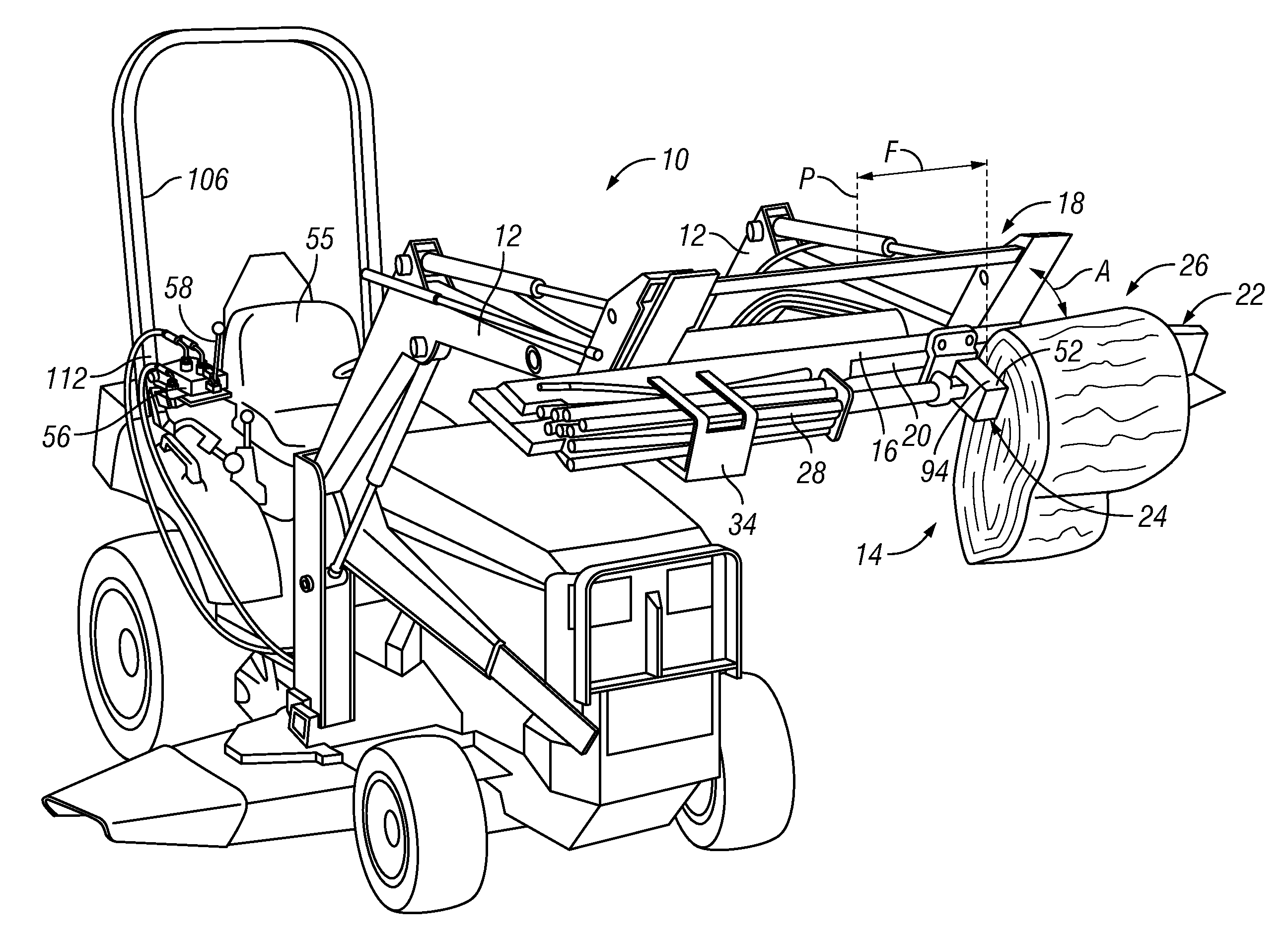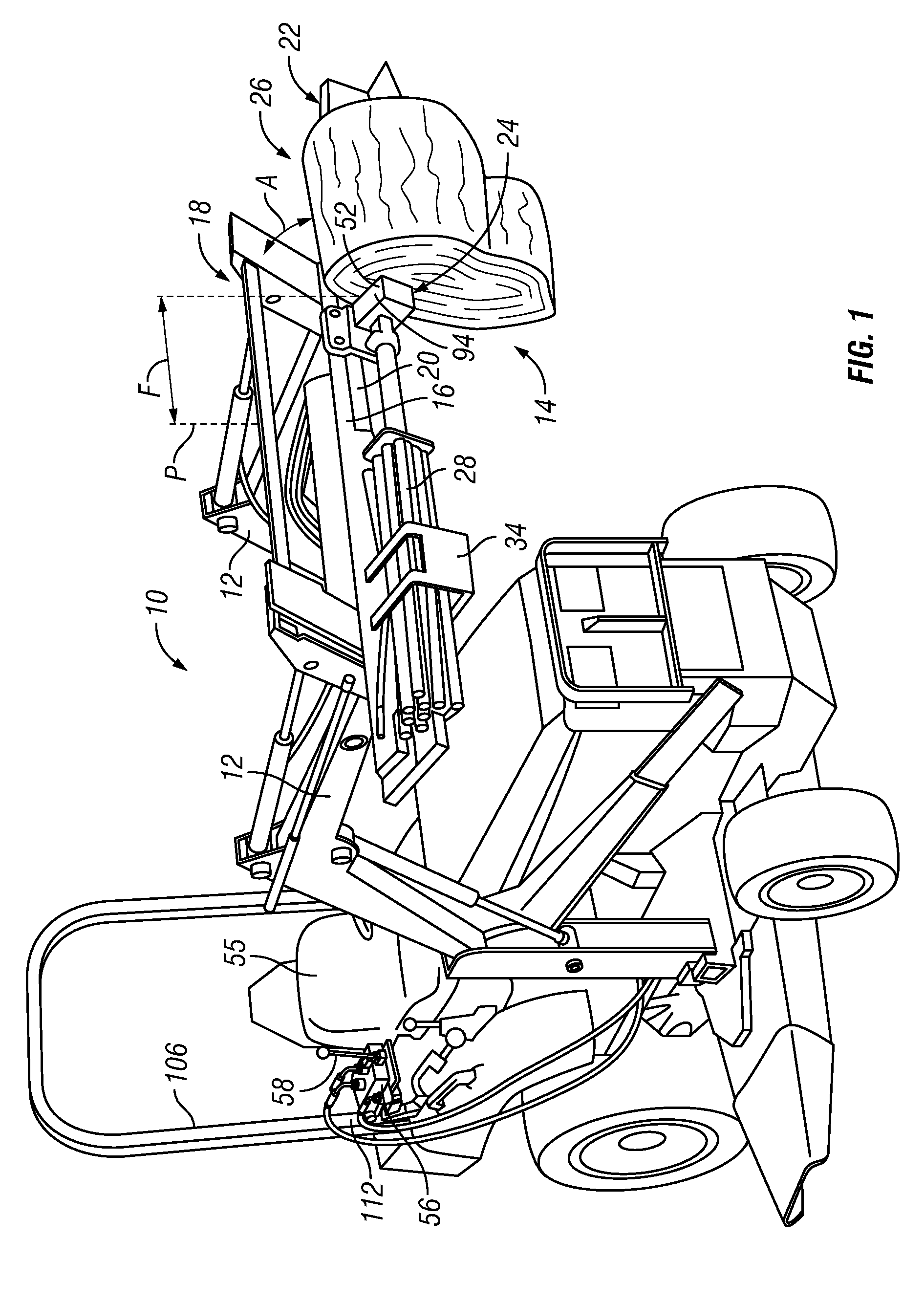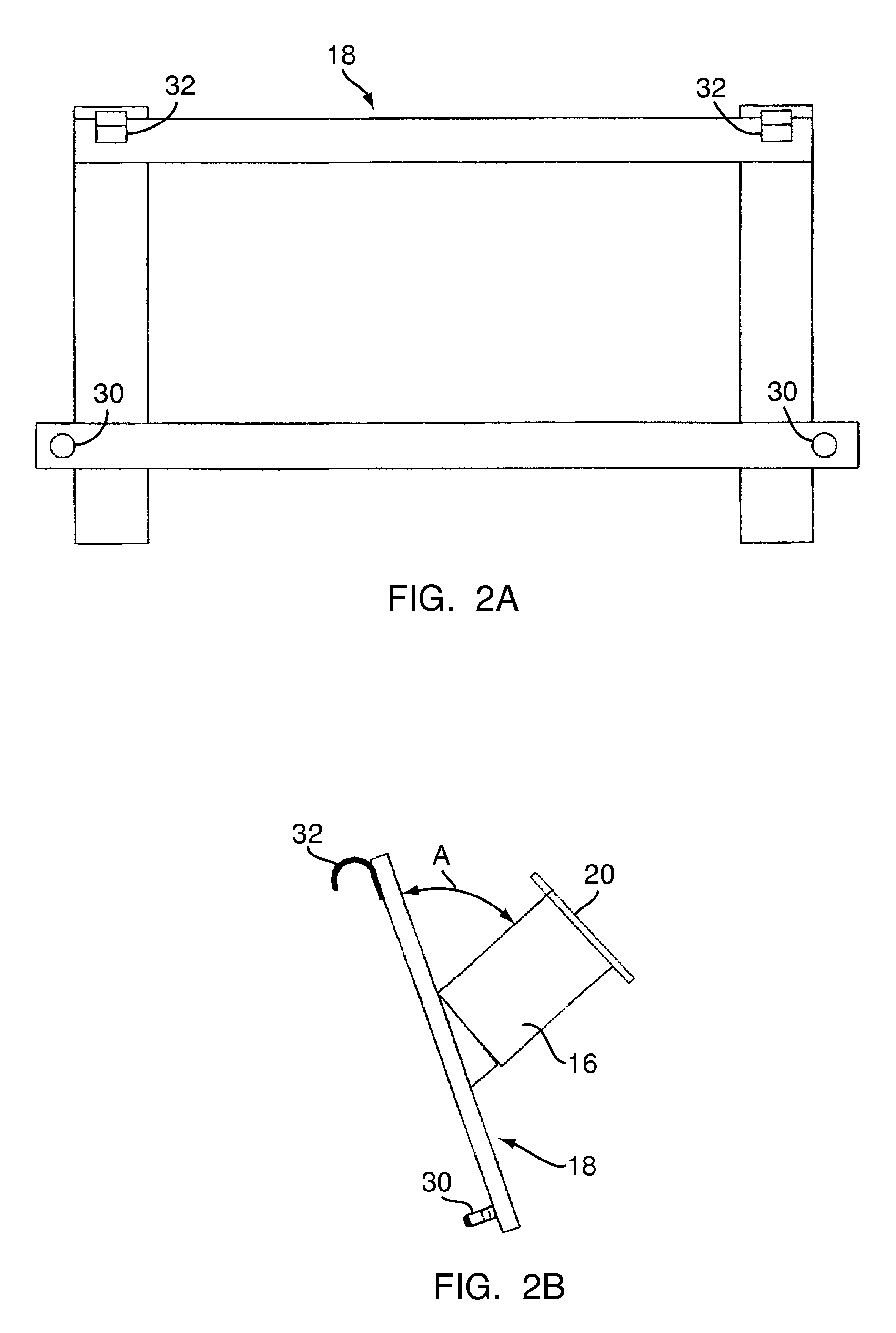Log splitter system for a front-loader tractor
a front-loader tractor and log splitter technology, which is applied in the direction of rotary clutches, agricultural machines, fluid couplings, etc., can solve the problems of increased physical injury risks, difficult lifting of the machine, and difficult installation of the removable log splitter to the host vehicle, so as to enhance the safety of log splitting and minimize damage to finished yard areas , the effect of increasing efficiency and ease of us
- Summary
- Abstract
- Description
- Claims
- Application Information
AI Technical Summary
Benefits of technology
Problems solved by technology
Method used
Image
Examples
Embodiment Construction
[0025]Referring to FIG. 1, a common front-loader tractor 10 has two loader arms 12 pivoted at a front end of the tractor. A log splitter 14, in accordance with the present invention, includes a beam 16 removably attachable to the loader arms 12 by a frame 18, as described in more detail below. The beam 16 defines a working surface 20 to which a wedge 22 and a ram 24 are coupled. The ram 24 and the wedge 22 cooperate to define a log opening 26 for receiving a log. When the log is received in the log opening, the working surface 20 closely abuts a surface of the log. An actuator 28 is mounted to the beam 16 and is operable to cause relative movement between the ram 24 and the wedge 22 along the working surface 20, thereby adjusting the width of the log opening 26. In a preferred embodiment, the actuator 28 is coupled to the ram 24, and is operable to move the ram 24 along the working surface 20, toward and away from the wedge 22.
A. Frame
[0026]In a typical front-loader tractor design, ...
PUM
 Login to View More
Login to View More Abstract
Description
Claims
Application Information
 Login to View More
Login to View More - R&D
- Intellectual Property
- Life Sciences
- Materials
- Tech Scout
- Unparalleled Data Quality
- Higher Quality Content
- 60% Fewer Hallucinations
Browse by: Latest US Patents, China's latest patents, Technical Efficacy Thesaurus, Application Domain, Technology Topic, Popular Technical Reports.
© 2025 PatSnap. All rights reserved.Legal|Privacy policy|Modern Slavery Act Transparency Statement|Sitemap|About US| Contact US: help@patsnap.com



